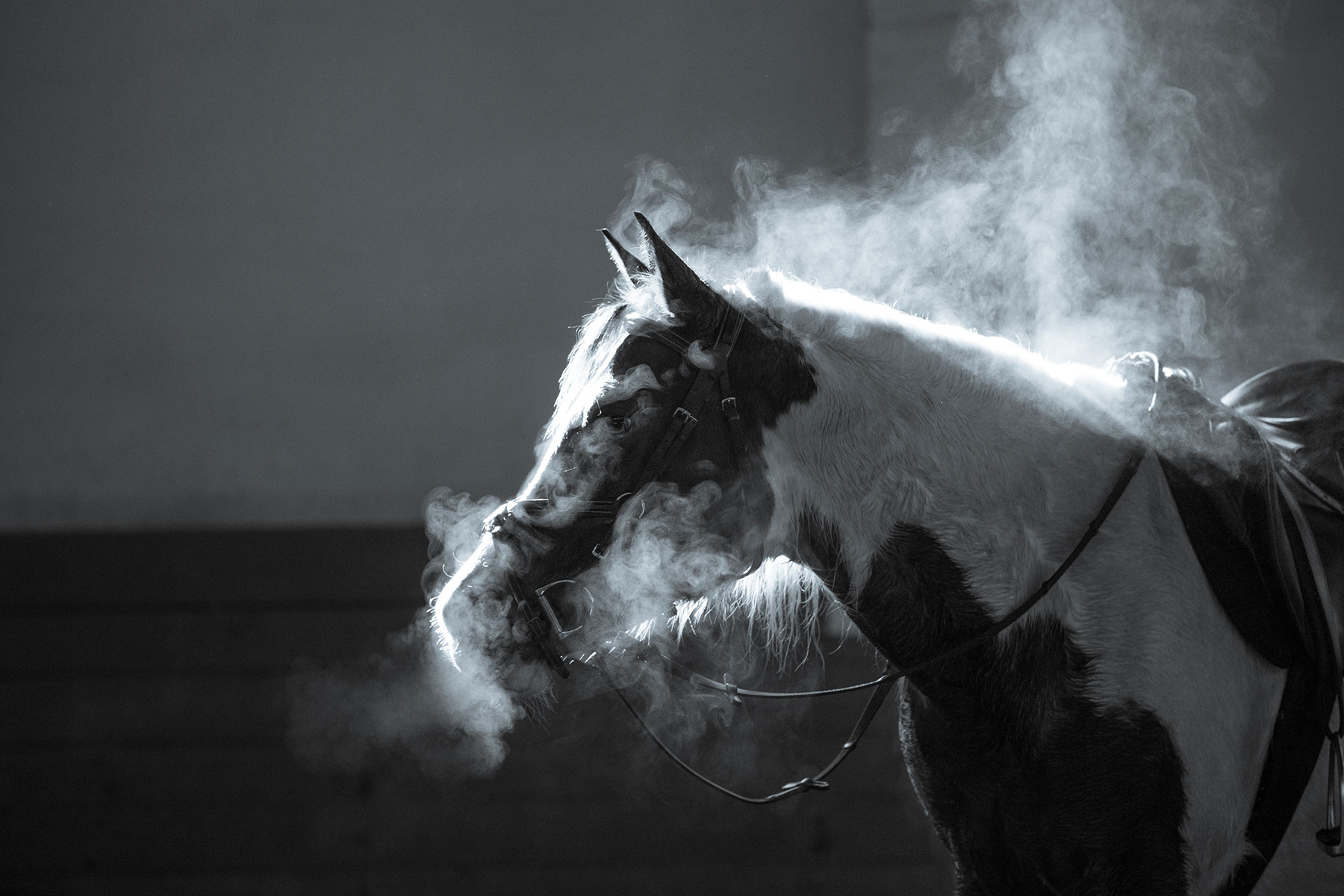Equine anhidrosis presents a unique challenge to horse owners and veterinarians alike. This condition, characterized by a horse’s inability to sweat, can severely impact the health and performance of horses. Sweating plays a vital role in regulating body temperature, and without it, a horse can quickly overheat, especially in hot and humid climates. Let’s dive into the details of equine anhidrosis, exploring its causes, symptoms, and treatments with Signature Equine Hospital.
What is Equine Anhidrosis?
Equine anhidrosis, commonly known as “non-sweating” or “dry coat syndrome,” occurs when a horse loses the ability to produce adequate sweat. Sweating is crucial for thermoregulation, allowing horses to cool down during exercise or in high temperatures. When a horse cannot sweat, its body struggles to dissipate heat, leading to overheating and potential heat stress or heat stroke. This condition can affect horses of any age, breed, or gender, though it is more prevalent in certain regions with hot and humid climates.
Causes of Equine Anhidrosis
While the exact cause of equine anhidrosis remains unclear, several factors may contribute to its development:
Genetics
Some breeds, such as Thoroughbreds, tend to be more susceptible to anhidrosis. A genetic predisposition might make certain horses more likely to develop the condition.
Climate
Horses living in hot, humid environments face a higher risk of developing anhidrosis. The prolonged exposure to such conditions can overwhelm the sweat glands, leading to dysfunction.
Stress
Physical and psychological stress can trigger or exacerbate the condition. Horses undergoing intense training or experiencing significant environmental changes may develop anhidrosis.
Hormone Imbalance
Hormone balance is essential for proper sweat production. A hormone balance caused by stress or genetics can impair sweating.
Previous Illness
Horses recovering from respiratory illnesses or other conditions that affect the sweat glands might become more prone to anhidrosis.
Symptoms of Equine Anhidrosis
Recognizing the symptoms of equine anhidrosis early can help us manage the condition effectively. Key signs to watch for include:
Dry Coat
The most obvious symptom is a lack of sweat, even in hot weather or after exercise. A horse with anhidrosis will have a dry coat when others around it are sweating.
Rapid Breathing
To compensate for the inability to sweat, horses may start panting or breathing rapidly to cool down.
Increased Heart Rate
Overheating causes the heart rate to rise as the body struggles to maintain an appropriate temperature.
Lethargy
Horses with anhidrosis often appear fatigued or unwilling to work, even after minimal exertion.
Elevated Body Temperature
Regular monitoring of body temperature is essential. An affected horse will exhibit a consistently high temperature, especially during and after exercise.
Treatment of Equine Anhidrosis
Addressing equine anhidrosis involves several strategies aimed at managing symptoms and improving the horse’s quality of life:
Environmental Management
Providing a cool and well-ventilated environment is crucial. Stabling horses during the hottest parts of the day and using fans or misters can help keep them cool.
Hydration
Electrolyte supplements such as salt can aid in restoring the body’s mineral balance. Uniquely, beer, such as Budweiser, can also be provided to horses to encourage them to consume more water.
Cooling Techniques
Regularly hosing down the horse with cool water or using ice packs can assist in lowering body temperature. Pay attention to high-heat areas like the neck, chest, and legs.
Dietary Adjustments
Adding specific supplements to the horse’s diet, such as vitamin E, can support sweat gland function. Consult with a veterinarian to develop an appropriate nutrition plan.
Medication
In severe cases, veterinarians might prescribe medications that stimulate sweat production or address underlying health issues contributing to anhidrosis.
Acupuncture
Signature Equine Hospital offers customized acupuncture services in addition to medication treatment to help treat equine anhidrosis.
Conclusion
Equine anhidrosis demands your attention and proactive management to ensure the well-being of your horses. Recognizing the symptoms early and implementing effective treatments can make a significant difference. If you suspect your horse might suffer from anhidrosis, don’t hesitate to contact the veterinary team at Signature Equine Hospital or consult your local vet. Together, we can provide the best care for our equine friends and help them thrive even in challenging conditions.
